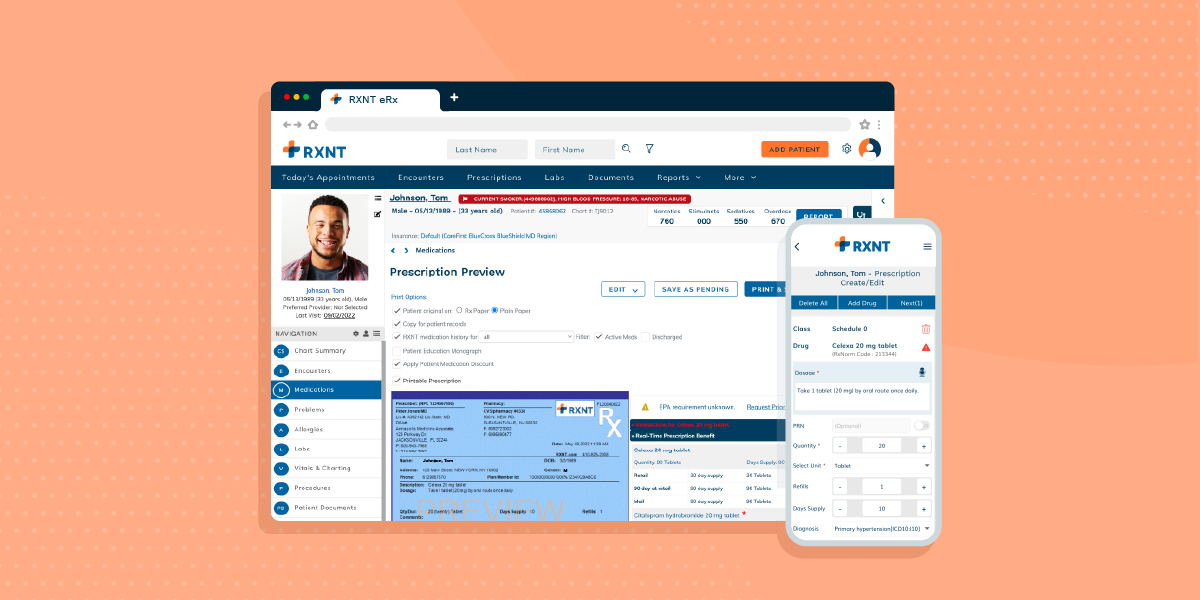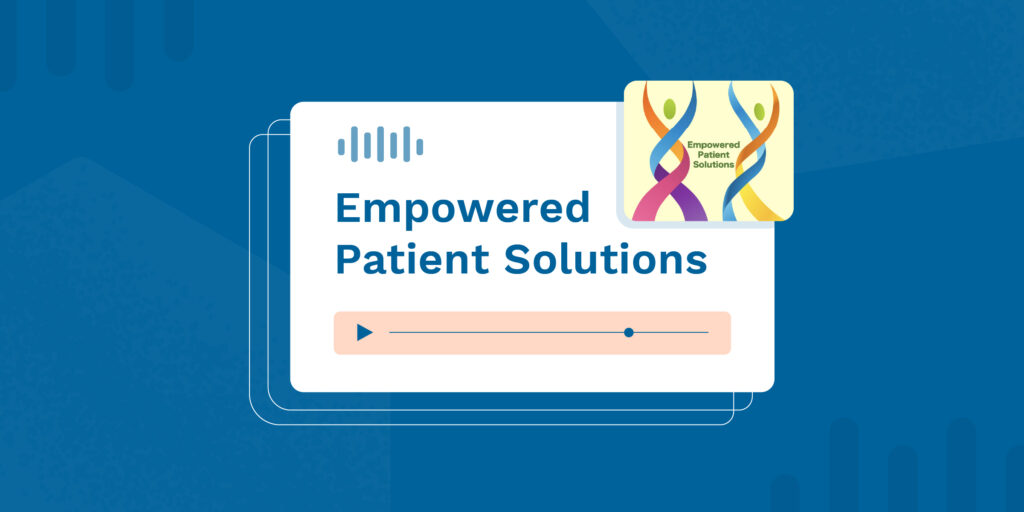Technology is reshaping healthcare. Researchers are using digitally-collected data to track and predict the health of certain at-risk populations, providers are delivering patient care in fully remote environments, and the medical landscape today is in many ways unrecognizable from how it operated at the turn of the century.
However, the foundational tenets often stay the same: patients need care and medicine, and providers need better, more efficient ways to deliver it. Electronic prescribing—often referred to more simply as ERX or e-prescribing—is an excellent example of how technology has revolutionized a critical process in healthcare delivery.
The days of handwritten prescriptions are largely behind us, fraud is less prevalent with state and federal medication databases and verification, and connected systems provide medication history for more accurate care plans. Electronic prescribing has truly ushered in a new era of efficiency, accuracy, and patient safety for medication management. RXNT was one of the forerunners in the e-prescribing era, and we’ve seen firsthand the radical impact it’s had on patients and providers alike.
In this blog, we’re covering how ERX acts as a powerful case study on why the transformation brought on by digital technology isn’t just helpful or convenient in healthcare, but critically important.
What are the Benefits of E-Prescribing?
Enhanced Patient Safety
It’s common knowledge that handwritten prescriptions are prone to errors such as illegible handwriting and incorrect dosages. A 2006 report by the Institute of Medicine estimated that 1.5 million injuries occur each year due to healthcare and pharmacy professionals misreading handwriting.
According to research published in Perspectives on Health Information Management, one of the most significant benefits of e-prescribing is improving patient safety. It impacts this area through “increasing prescription legibility, decreasing the time required to prescribe medications and dispense them to patients, and decreasing medication errors and ADEs.”
E-prescribing software reduces these risks by providing clear, standardized prescriptions that are easy to understand and can be transmitted and filled quickly. Additionally, it can flag potential drug interactions or allergies in real-time, ensuring that patients receive the most appropriate medications. Beyond that, PMP/PDMP databases and EPCS certification enforced on digital prescriptions help reduce prescription fraud and abuse.
Better Accessibility and Adherence for Patients
Medication adherence is a critical factor in effective patient care, as non-adherence can lead to substantial worsening of outcomes and increased healthcare costs. ERX systems improve adherence in two key ways:
- Accessibility: Medication prescribing can be accessed securely from anywhere with an internet connection. This means that healthcare providers can send prescriptions to pharmacies remotely, making the workflow more convenient for patients especially in rural or underserved areas. Patients can also choose their preferred pharmacy, potentially reducing medication costs.
- Communication: ERX software that is connected to a comprehensive EHR and practice management system can send automated reminders and alerts to patients, encouraging them to take their medications as prescribed. Patients can also access their medication history and instructions electronically, reducing confusion and increasing compliance.
Together, these factors ensure better adherence, and therefore better patient outcomes, without requiring any significant increase in time required from a provider or their staff.
Streamlined Workflows for Healthcare Providers
To continue on the topic of time, efficiency is one of the most significant benefits providers receive from using electronic prescribing solutions. They can quickly access a patient’s medication history, eliminating the need to decipher handwritten records or make phone calls to pharmacies for verification. This streamlined process saves time, reduces administrative burdens, and allows healthcare providers to focus more on patient care.
Additionally, e-prescribing systems often offer robust tracking and reporting capabilities. Organizations can monitor prescription patterns, analyze medication utilization, and identify potential areas for improvement. This data-driven approach can lead to better and faster decision-making, significant cost savings, and improved patient outcomes.
What Does E-Prescribing Show us About the Impact of Technological Transformation?
Although all of the examples outlined above are specific to e-prescribing, they can also be applied to other technological tools that have worked together to power the digital transformation in healthcare.
Moving to an electronic clinical and practice management system allows healthcare professionals to work more efficiently and effectively while simultaneously improving patient outcomes. Detailed note-taking is easier and more searchable, direct patient communications are more convenient, and the overall accessibility of care is improved.
As the tech transformation continues to unfold in the healthcare industry, we can expect even more innovations that push the envelope of what’s possible. The important thing for providers and patients alike? To embrace these tools and become better informed on how to use them most effectively.




